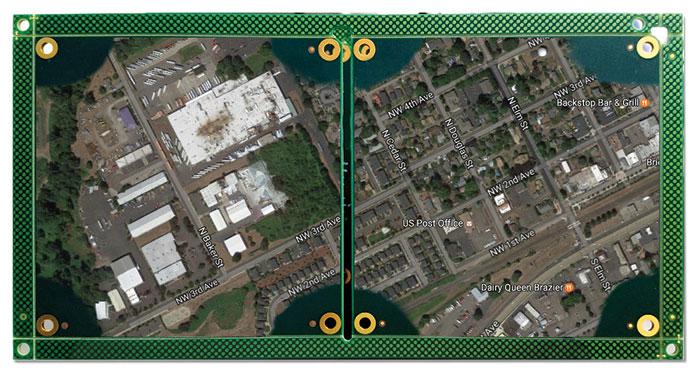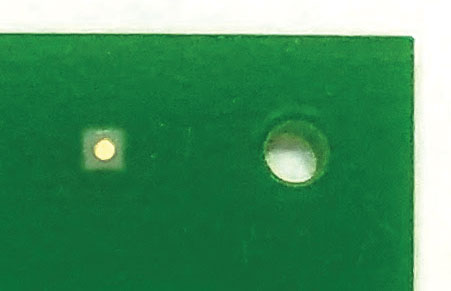
It all comes down to contrast and positional accuracy.
Accountants may have a fiduciary responsibility, but that really has nothing to do with printed circuit board assembly. Change the “ry” to an “l,” however, and it spells fiducial, which does have something to do with PCB assembly.
A fiducial is essentially an alignment mark used by surface-mount assembly machines. High-volume assembly requires them to ensure accurate registration and parts placement. Low-volume assembly, on the other hand, doesn’t necessarily require them. (Some low-volume shops do, so ask instead of assuming.) Even if they aren’t required, they still help and are always a decent idea.
The basic idea is to create a non-reversal pattern with two or three fiducial marks on the board or panel. As shown in FIGURE 1, the designer placed three fiducials around the board in a non-reversible pattern, and the same on the panel rails. (To protect the confidentiality of the board design, I obscured the circuit detail with this convenient map of Canby, OR. Screaming Circuits is on the corner of NW 3rd and N. Baker St.) The upper right, lower right,and lower left corners of each board and of the panel have fiducials, while the upper left corners don’t.)

Figure 1. PCB with fiducials in three spots around the board in a non-reversible pattern.
In terms of the specific construction of a fiducial, two things are most important: contrast and accuracy of position. Contrast comes from the fiducial’s composition: bare copper, 1 to 2mm in diameter. Don’t cover it with solder mask. Make the mask opening 2 to 5mm larger than the copper.
FIGURE 2 shows a close-up in detail. This particular fiducial mark uses a square cutout in the silkscreen. Most use a round cutout, but the shape isn’t all that important. The copper pad should be round, though.

Figure 2. A close-up of a fiducial, in which a square cutout is used in the silkscreen.
Making the fiducial out of copper gives the positioning accuracy. I’ve been asked why silkscreen markings aren’t acceptable. Silkscreen isn’t always registered consistently, and therefore it won’t ensure accurate alignment. Do not use silkscreen as a fiducial or positioning mark of any kind.
Again, they’re generally required for high-volume manufacturing. Some manufacturers don’t require them for low-volume, some do. Even when not required, they’re still a good idea.
Duane Benson is marketing manager and chief technology champion at Screaming Circuits (screamingcircuits.com); This email address is being protected from spambots. You need JavaScript enabled to view it..
















